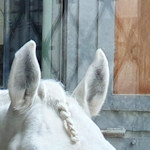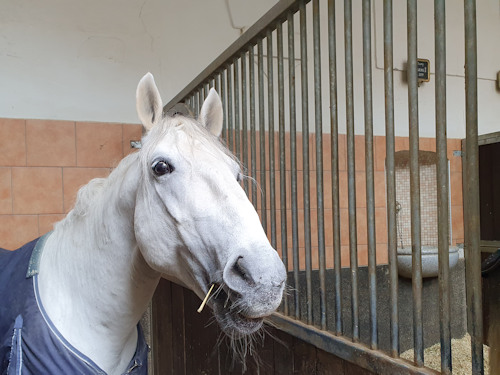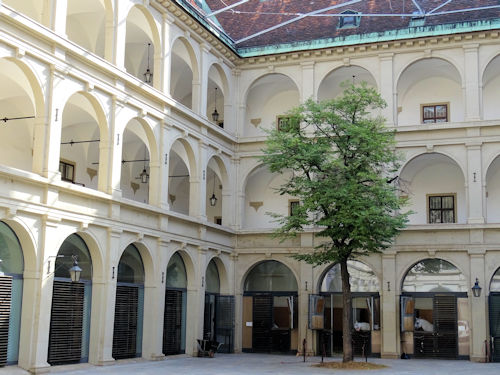
The life of a Lipizzaner stallion is not all pirouettes, gala evenings, and sharing a nosebag of hay with your groom. It begins far from the Viennese crowds in the rural idyll that is the Piber stud farm in the Austrian province of Styria.
A career summary

(Relaxing with some hay; photo taken with the kind permission of the SRS during a press tour)
I enjoyed a trip to Piber and a tour and public training at the Spanish Riding School, so thought it might be helpful just to outline the typical life of one of the stallions you see performing in the arena.
The foals spend their early years in Piber, initially with the mare and breeding herd before eventually joining others of their own age and, finally, the colt herd.
As colts, the male horses spend two to three years under observation and supervision. They also enjoy plenty of time roaming “free” on alpine pastures.
The social and physical environment allows the stallions to develop the skills they need later if they’re to make it as performers: stamina, dexterity etc.
Approaching four years old, the horses undergo a selection process to judge their suitability for Vienna’s Spanish Riding School.
Key selection criteria include their genealogy, constitution, size, build, natural ability, and willingness to keep smiling while signing autographs. (One of those I made up.)
The best then transfer to a training program in Heldenberg (in the province of Lower Austria) and Vienna which lasts between five and eight years. Only then are the stallions considered suitable for public performances.
Life in the stables

(The Stallburg stable complex)
My trip around the Vienna facility revealed the Lipizzaners live an opulent lifestyle (for a horse). Each has its own stable with 24 hour supervision. They eat organic food, have their own dedicated city water supply, and the facilities include a solarium should they feel a little tired after a performance.
The stallions also get regular holidays in the country at the Heldenberg facility. Retirement age is about 25, and because of their fitness, genetics and healthy upbringing, the stallions usually live for a good few years afterwards.
The school has a few dozen stallions at any one time and you have various ways of seeing them. But to get up close and learn much more about the school, its horses and the life of a Lipizzaner, take that tour!